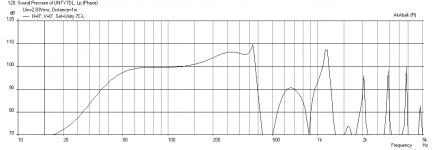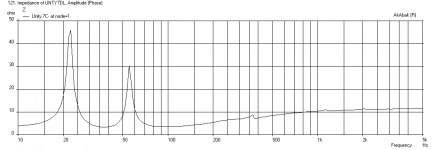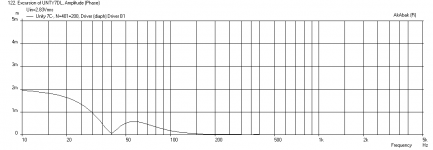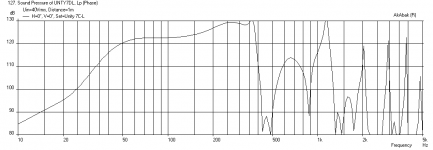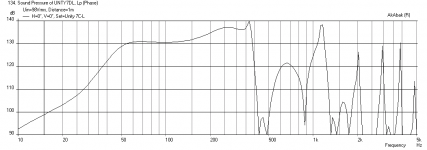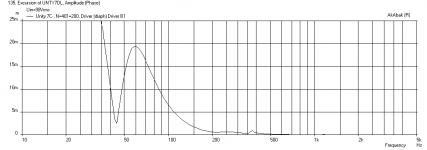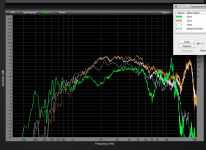SH90 two-way in foam core
I am starting to prototype some designs in foam core. Here is a 90 deg horn with foam core TC9FD's for the mids/bass.
More in the Foam Core thread:
http://www.diyaudio.com/forums/full-range/223313-foam-core-board-speaker-enclosures-200.html#post3698230
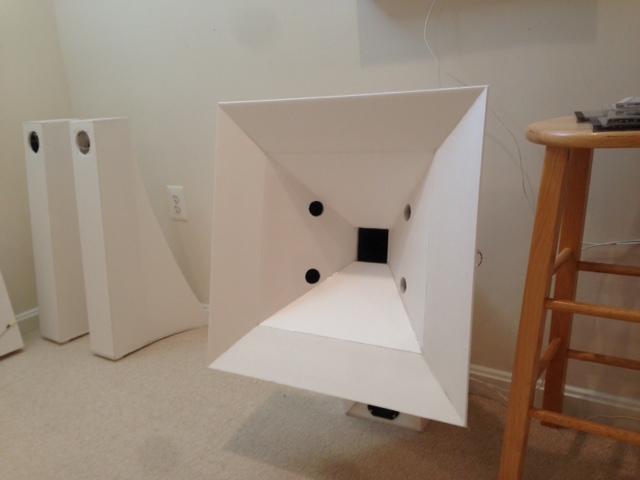
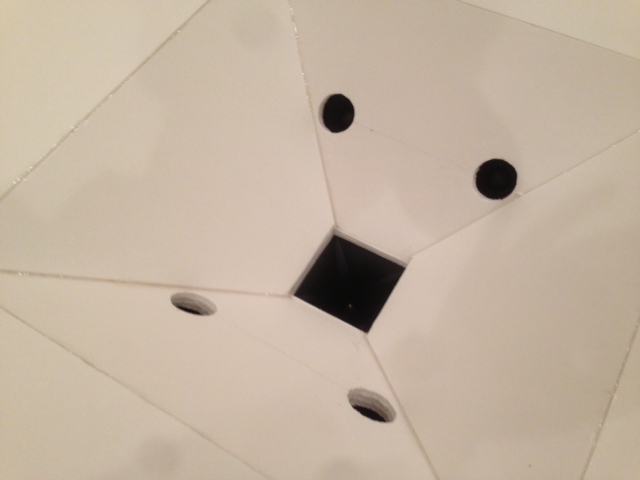
I am starting to prototype some designs in foam core. Here is a 90 deg horn with foam core TC9FD's for the mids/bass.
More in the Foam Core thread:
http://www.diyaudio.com/forums/full-range/223313-foam-core-board-speaker-enclosures-200.html#post3698230


It would be pretty easy to use the foam core as the backing structure for a fiberglass (or hemp) layup with resin. I think I have heard of using Gorilla glue and hemp, also titebond and hemp works too. The fiberglass would make this thing resemble a surfboard in construction.
I have a new sound clip of this horn with a padding resistor added to the CD to match the mids.
diyAudio
I have a new sound clip of this horn with a padding resistor added to the CD to match the mids.
diyAudio
xrk971 any chance you were able to look at the parameters I gave you?
Just curious how these 15s performed.
Chrapladm,
Here is what I managed to come up with for your 15 inch drivers (qnty 2). I ended up putting the bass injection ports at 14.5 in from the throat - you want bass ports to be farther out rather than close in. I had to put a big 3.5 mH coil and fat 8 ohm power resistor to tame the rising response but it is still there - so best to EQ it out rather than burn up precious watts on a resistor. I put this is a 38 in wide x 32 in high x 28 in deep box (3/4 in ply assumed) with qnty 3 x 6.0 in dia x 8 in long bass reflex ports. The bass driver injection ports are 3.0 in diameter.
Here is the input to the spreadsheet:

Here is the SPL vs Freq for 2.83V input - pretty sensitive speakers
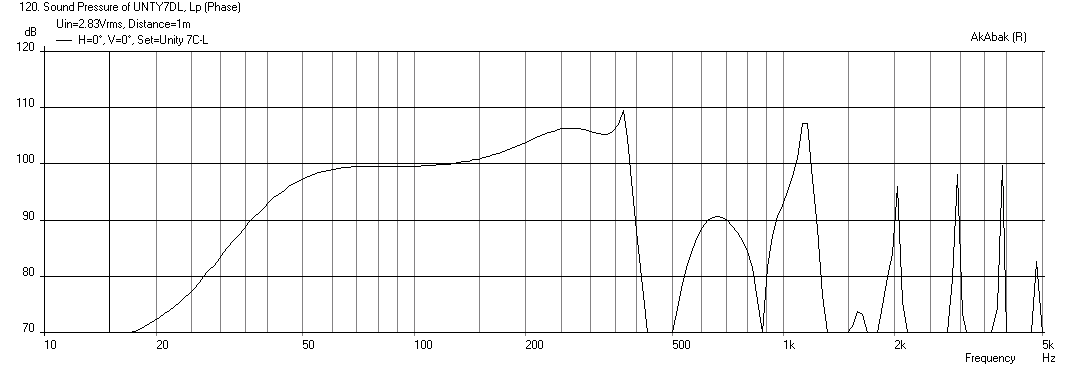
Here is the Impedance curve:
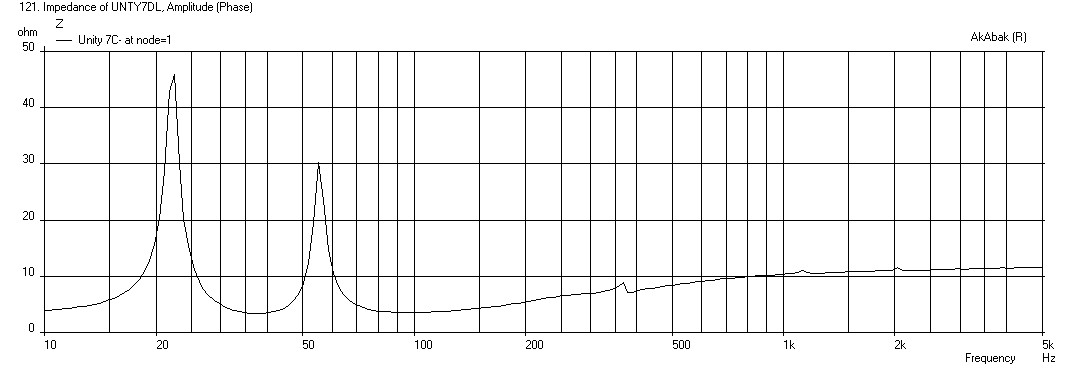
Here is the max cone displacement at 40 volts rms (really needs a high pass filter at 40 Hz):
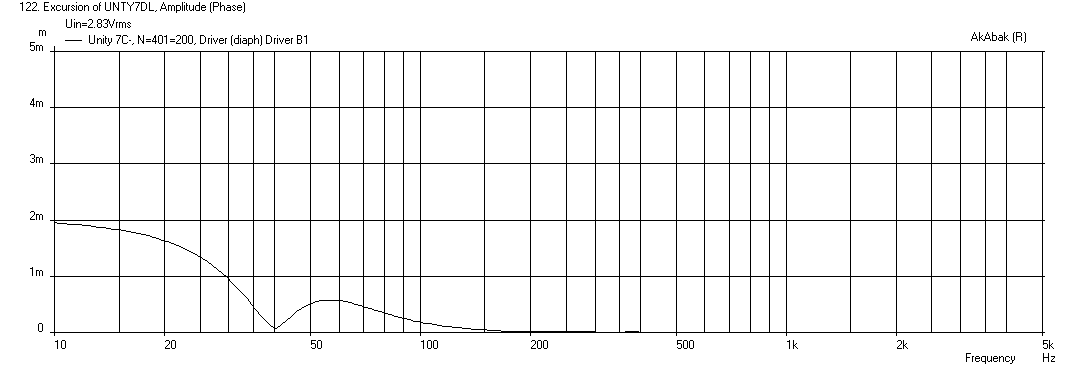
Here is the corresponding max SPL at max excursion (it will do 122 dB):
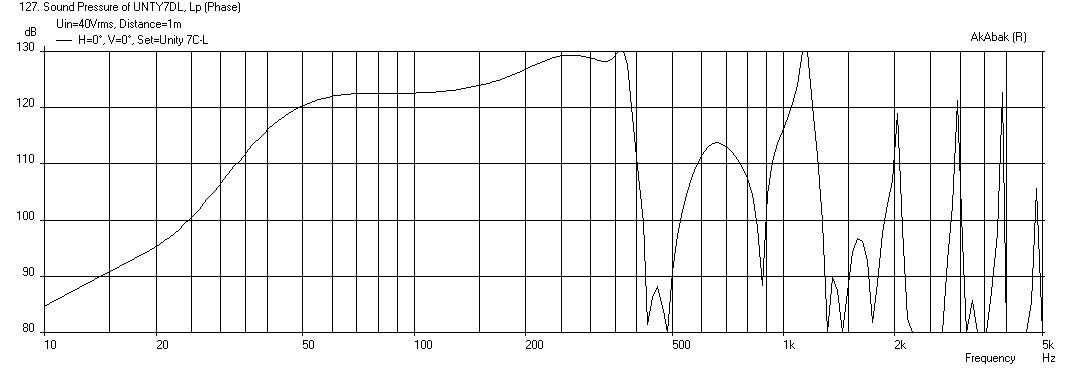
At max SPL, there may be some port noise as the velocities are reaching 20 m/s in the ducts. However, I don't think you can hear that given the 122 dB from the main output.
This design achieves providing a high end up to about 350 Hz so that it can be integrated with a mid driver, it achieves usable bass extension down to about 45 Hz.
Attachments
Last edited:
Will adding two more 15's smooth out the response or is the rising response something that will always be there?
These are the cheapest 15's I can get in OZ and still high quality. I was hoping for more SPL but it is what it is. In the end I think the combination of four mids, 1 CD and 2-4 15's will get me to 130db. I don't NEED this spl but want to have plenty of headroom. I also will be using these outdoors.
Thanks again for your efforts. Have a lot more to go reading wise but this is at least narrowing down what I need.
These are the cheapest 15's I can get in OZ and still high quality. I was hoping for more SPL but it is what it is. In the end I think the combination of four mids, 1 CD and 2-4 15's will get me to 130db. I don't NEED this spl but want to have plenty of headroom. I also will be using these outdoors.
Thanks again for your efforts. Have a lot more to go reading wise but this is at least narrowing down what I need.
That rising response is following the rising acoustical impedance of the horn and will be there no matter how many woofers you use. No worries. As he said, you can EQ it flat.
As to using four 15" drivers, think about how big you can stand the box being. If you double the number of drivers, you will need twice the volume for the bass reflex portion. Better to stick with two drivers but find some with twice the Xmax per driver.
As to using four 15" drivers, think about how big you can stand the box being. If you double the number of drivers, you will need twice the volume for the bass reflex portion. Better to stick with two drivers but find some with twice the Xmax per driver.
Hard finding drivers with more Xmax at this price. Even when going with a higher budget it is still hard to find a woofer with more than 10mm Xmax. The woofers I was going to use will have a 19mm damage. I don't plan on pushing them that hard but I wont get much more "Xmax," from anything else. There are a few woofers out there that cost almost triple and offer about 16mm Xmax.
I will be using subs so I could cross them over higher and push them harder. But I would like to also have these used full range and with no subs at times.(Not at 130dbs of coarse)
I also would like to try and stay within these parameters:
34" x 26" x 27" - 45" x 26" x 27"
These are rough dimensions of the SH64 and SH96. I really like the 64 dimensions.
I will be using subs so I could cross them over higher and push them harder. But I would like to also have these used full range and with no subs at times.(Not at 130dbs of coarse)
I also would like to try and stay within these parameters:
34" x 26" x 27" - 45" x 26" x 27"
These are rough dimensions of the SH64 and SH96. I really like the 64 dimensions.
A lot of good work here...any update?
Hi,
Just gotta find the time to build these Synergy horns. I have the drivers and my design is ready to go. Hopefully I will build them early next year after the holidays.
The woofers I was going to use will have a 19mm damage. I don't plan on pushing them that hard but I wont get much more "Xmax," from anything else.
If you can tolerate the occasional excursion towards 19 mm, your peak SPL is much greater than 122dB. High efficiency PA woofers really won't have much more xmax than this. The way to achieve higher power is to not use a bass reflex but to go with a sealed box and EQ the bass up with lots of amplifier power. Another way is to use something like a Karlson type T-15 chamber for the subs and not put it in the horn. Leave horn as 2-way with mids and tweeter.
40hz is plenty for me. 45hz is what I was hoping to reach. I figured I would use a 45hz Hpass at war volumes. Most likely when using the speakers outside I wont be cranking them up at loud. Yes at times but 90% I will keep volumes low enough that I could probably get away without using a Hpass at all but maybe 25hz.
I know when I will need the Hpass and when I wont. I have plenty of TH's around to know. I am hoping to still go with ported for this 64 project. I will build a prototype over the next few months and see what happens. I just hope the outcome is to my liking. I also hope that I don't do too good of a job that I never build anything past the prototype.
It seems I need to be worried about the peak before the port tuning also.
I know when I will need the Hpass and when I wont. I have plenty of TH's around to know. I am hoping to still go with ported for this 64 project. I will build a prototype over the next few months and see what happens. I just hope the outcome is to my liking. I also hope that I don't do too good of a job that I never build anything past the prototype.
It seems I need to be worried about the peak before the port tuning also.
Last edited:
I am still looking at budget friendly CD's for my project 64. Is there anything a BA750, from DIY Sound group, would have over the BMS 4550?
They are the same price and I have not decided yet on the CD. I know Tom uses a 1.4" but I cant find a cheap 1.4" and I know the 4550 can do 900hz so that might be enough. I believe the BA750 may be able to do 700hz also.
I will be using four V10 Misco's for the mids if this helps any.
They are the same price and I have not decided yet on the CD. I know Tom uses a 1.4" but I cant find a cheap 1.4" and I know the 4550 can do 900hz so that might be enough. I believe the BA750 may be able to do 700hz also.
I will be using four V10 Misco's for the mids if this helps any.
I am still looking at budget friendly CD's for my project 64. Is there anything a BA750, from DIY Sound group, would have over the BMS 4550?
They are the same price and I have not decided yet on the CD. I know Tom uses a 1.4" but I cant find a cheap 1.4" and I know the 4550 can do 900hz so that might be enough. I believe the BA750 may be able to do 700hz also.
I will be using four V10 Misco's for the mids if this helps any.
The BMS 4550 is the only compression driver I've seen that has a 1" exit, yet has response out to 1khz and does not resort to exotic diaphragm materials.
This is for a very simple reason; the more mass that you add to a diaphragm, the lower a diaphragm's resonance. When you lower the diaphragm resonance, you shift the bandwidth of the device *down*.
So the patented shape of the BMS - a ring - is a clever way of having your cake and eating it too. It has the same voice coil diameter as a dome, but the size of the radiator is reduced.
You may have seen that SB Acoustics has another 'spin' on this, by putting a 'dimple' in a dome.
The big Denovo seems to go the exact *wrong* direction for what we want. Instead of shrinking the diaphragm, it expands it. On top of that, increasing the diaphragm area also increase the compression ratio at the throat.
And it's titanium. Ugh. I've never heard a titanium driver that exceeded aluminum or mylar or beryllium in the same class.
And where are the frequency response plots? Are they seriously selling a $150 compression driver without offering a single measurement? The only information I could find on the response was this post on a forum, where an owner said "Due to a minor issue in the top octave (~15khz), listening will determine whether a super-tweeter is a worthy addition." I'm guessing that the "minor issue" is that a 2" titanium diaphragm simply can't get past 15khz, or at least not cleanly. (Check out the CSD measurements I've posted in this thread, which show that smaller is better when it comes to the CSD behavior of a CD.)
All in all, I can't see a single reason to use the Denovo over a BMS.
I would personally go the *other* direction, and use a smaller diaphragm, like Bill Waslo did with his Celestions, and I did likewise. (Albeit a different model of Celestion.)
Last edited:
Thanks PB. I was favouring the BMS because they have been used by Tom himself. So your input also helps me decide on sticking with the BMS. I might try the Celestion at a later date. I am going to try and build a smaller 2way SH down the road using a 1" and a pair of 8". BUT for now I just want to focus on the big SH64 project.
The BMS 4550 is the only compression driver I've seen that has a 1" exit, yet has response out to 1khz and does not resort to exotic diaphragm materials.
very low Fs drivers
http://www.faitalpro.com/en/products/HF_Drivers/product_details/index.php?id=502010110
FaitalPRO | HF Drivers | HF10RK
Patrick,The BMS 4550 is the only compression driver I've seen that has a 1" exit, yet has response out to 1khz and does not resort to exotic diaphragm materials.
So the patented shape of the BMS - a ring - is a clever way of having your cake and eating it too. It has the same voice coil diameter as a dome, but the size of the radiator is reduced.
There are many one inch exit drivers using aluminum, titanium, and phenolic diaphragms that have more LF response than the plastic diaphragm BMS 4550.
The reduced SD of the ring radiator makes the HF peak higher, but reduces the LF SPL it can put out prior to distortion.
The examples below are BMS 4550 (50 on), BMS 4552 (52 on), Eminence PSD2002 (02 on), and a JBL 2420 using a Radian titanium diaphragm.
All the tests are on the same 13 degree conical horn.
The PSD2002 and the 2420 both have more output below 800 Hz than the BMS drivers.
Art
Attachments
- Home
- Loudspeakers
- Multi-Way
- Suitable midrange cone, for bandpass mid in Unity horn.

